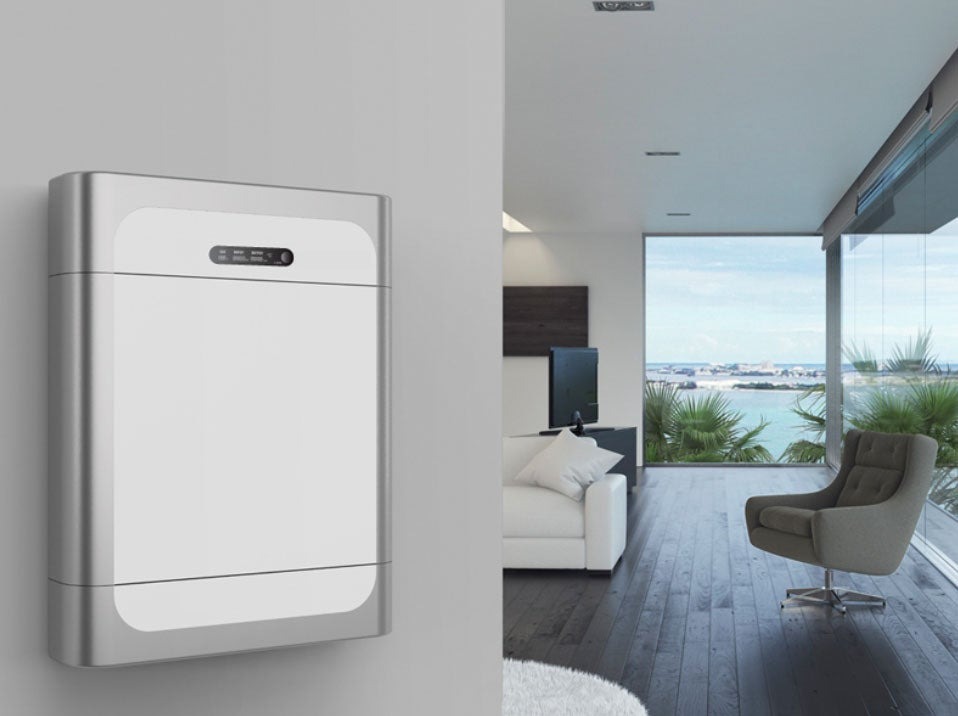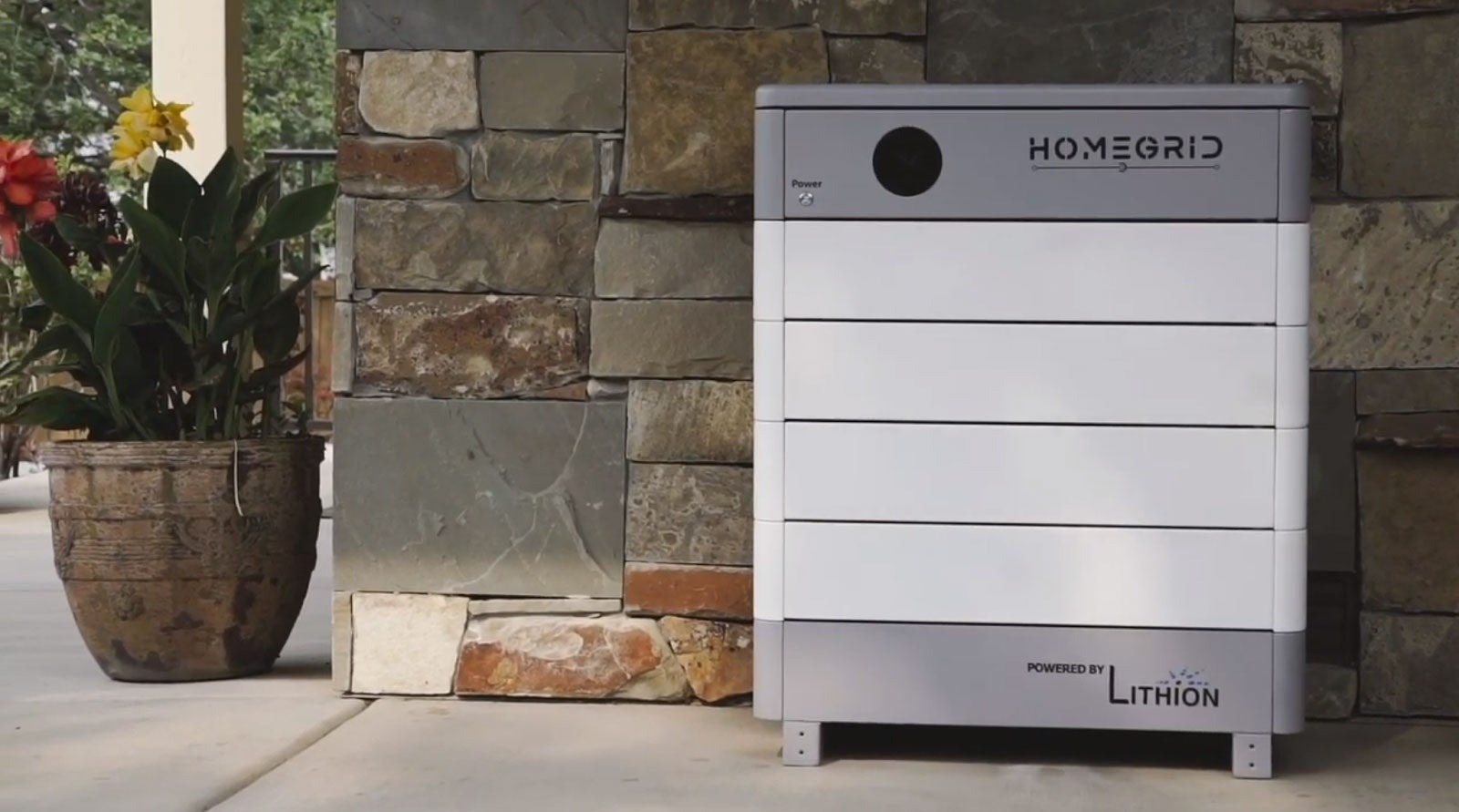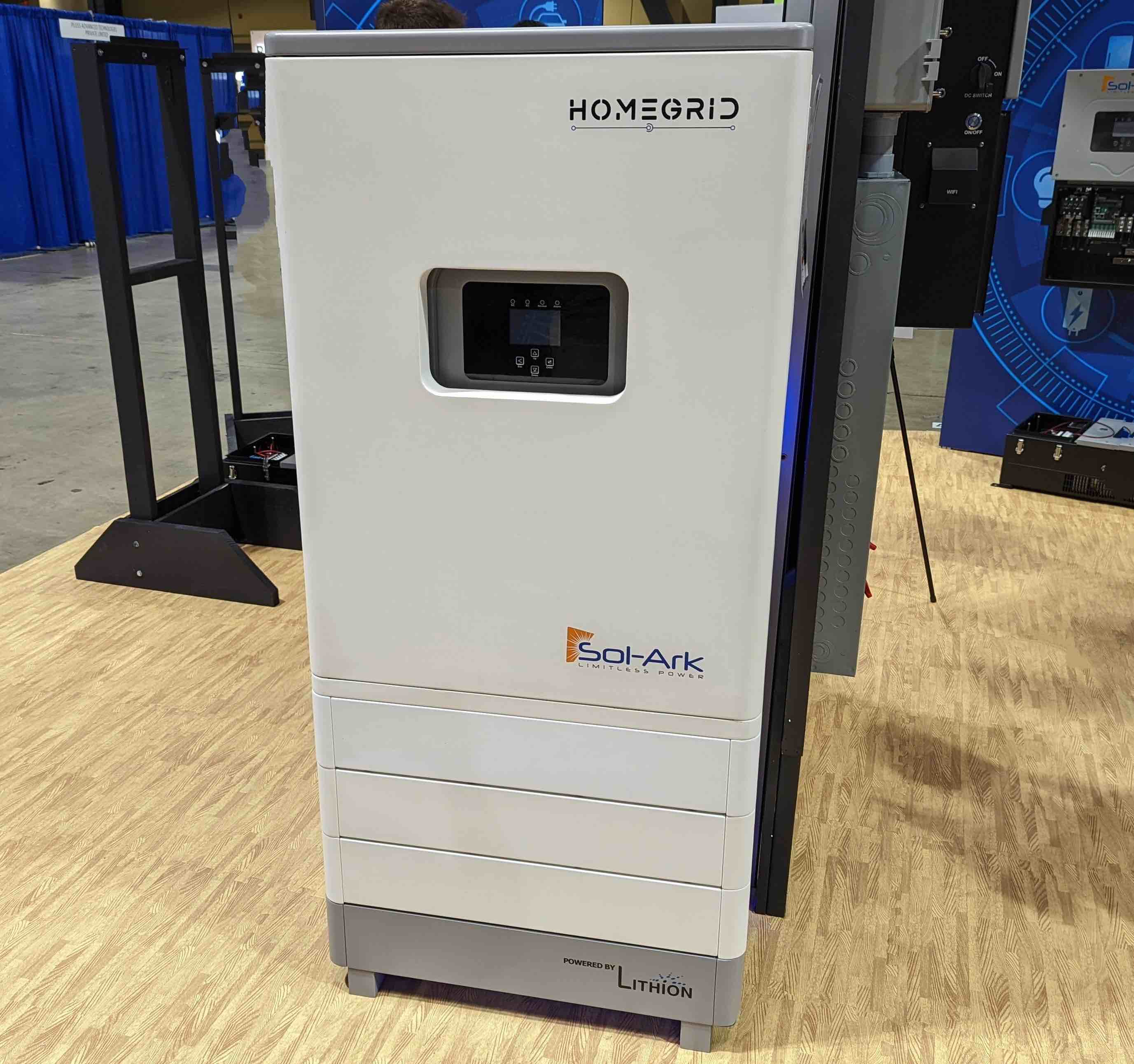
Find out what solar panels cost in your area
Lithion HomeGrid residential solar batteries are a newer product on the market that combine Lithium Iron Phosphate battery technology (nicknamed LFP based on its chemical formula, LiFePO4), with a modular design, allowing homeowners to get a battery size that meets their unique needs and providing them with the means to quickly upgrade when necessary.
LFP batteries are safer and more efficient than other types of lithium ion batteries; namely Lithium-Nickel-Manganese-Cobalt-Oxide (NMC) batteries, which are currently the most-used battery chemistry. NMC batteries work well for many applications, but operate at a higher temperature and have the potential to catch fire if they have defects, due to a phenomenon known as “thermal runaway”. The chemistry of LFP batteries also doesn’t contain cobalt, a toxic chemical typically mined under bad conditions.
The home energy storage industry has seen a huge influx of new products in the recent past, as solar companies and huge electronics conglomerates jump into a marketplace where customers are hungry for smart, affordable ways to provide backup power for their homes. HomeGrid is one of the latest of these products, and the company’s great technology and smart approach to modularity should earn it a top spot on the list of battery backup options for many people.
Below, we’ll dive into what makes the HomeGrid battery special, and which kind of homeowner it’s best for.
Key takeaways
-
HomeGrid batteries are a newer product on the market, offered by Lithion, a company with years of experience making batteries.
-
They use LFP battery chemistry, which is safer and longer-lasting than the more widespread NMC battery chemistry.
-
HomeGrid’s Compact Series batteries offer 5.12 kWh of storage and are best for tiny houses and apartments.
-
Stack’d Series batteries are modular, can store between 9.6 and 38.4 kWh, and are best for most people who want to add backup power with a solar installation.
-
The Integrated Series is like the Stack’d Series but comes with an integrated Sol-Ark inverter in a special cabinet.
Lithion battery technology
HomeGrid batteries are manufactured by Lithion, Inc., which is a vertically integrated manufacturer of battery cells, packs, and modules. Formerly called “Valence Technology”, the company developed and manufactured the first-commercially viable LFP battery cathode material.
Lithion manufactures its batteries in several locations, including a large battery pack facility in Nevada. The cells in HomeGrid batteries are currently made overseas, but the company is actively looking for sites to manufacture HomeGrid battery cells in the USA.
Lithion’s products are interesting because of the experience and the trust the company has gained as a supplier to many other industries. They were a pioneer of LFP batteries and hold important patents related to battery technology.
In addition to making HomeGrid batteries, Lithion provides battery cells and packs to electric and plug-in hybrid vehicle manufacturers and military contractors.
HomeGrid battery products
The HomeGrid brand offers three products for the residential and small commercial market: the Compact Series, Stack’d Series, and Integrated Series.
HomeGrid also offers products for large commercial and grid-scale uses, but since our website is focused on the home market, we’ll discuss only the three products listed above.
Here’s a table showing how the different batteries compare:
Product series | Storage capacity | Continuous power | Surge power | Mounting & weight | Cost* |
|---|---|---|---|---|---|
Compact | 5.12 kWh | 5.12 kW | 5.12 kW | Wall, 128 lbs | $3,300 |
Stack'd | 9.6 - 38.4 kWh (2-8 modules) | 9.6 - 14.4 kW | 12 - 16.8 kW | Floor, 304 - 952 lbs | $6,850 - $23,000 |
Integrated | 9.6 - 24 kWh (2-5 modules) | 9.6 - 14.4 kW | 12 - 16.8 kW | Floor, 324 - 648 lbs | $16,000 - $24,000 |
*Cost before installation and incentives
It’s important to note that the costs listed above are shown before applying the federal solar tax credit; the batteries are eligible for the credit, so long as they are exclusively charged by a solar installation.
If you’re confused by any of the numbers in the table, check out our articles on kW vs kWh and our solar battery buyer’s guide.
Now, let’s run through details about each of HomeGrid’s residential products.
Compact Series

The Compact Series is an entry-level battery for small residential needs. This wall-mounted battery weighs 128 lbs and can store 5.12 kWh of energy. The battery is DC-coupled, meaning it needs to be connected to a hybrid inverter. The Compact Series is designed to work with inverters from multiple manufacturers (see datasheet linked below for a list).
Compact Series specifications
The battery can provide up to 5.12 kW of power to run appliances, which is enough to keep some lights on and a refrigerator going, but not enough to start up an air conditioner. The average residential home uses about 30 kWh per day, so one HomeGrid Compact battery would not be enough to store energy for an average-sized home.
It is possible to connect up to 10 Compact Series batteries in parallel to increase energy storage capacity, but the batteries’ power output would still be limited to 5.12 kW. This means multiple Compact batteries could store enough energy, but still wouldn’t be powerful enough to start an air conditioner.
Additional reading: Compact Series datasheet
Ideal use
The best use for the Compact Series batteries would be for storing a small amount of energy in a cabin or tiny home with solar panels, or to provide backup power to a small apartment.
Cost
Compact Series batteries can be purchased for $3,300 from popular solar supply websites. If you plan to use the Compact battery in an off-grid setup, you’ll also need a battery-ready hybrid inverter, along with solar panels.
Stack’d Series

HomeGrid’s main product line is the Stack’d Series. As the name implies, the battery system is built by stacking components on top of one another. Each battery comes with a base on the bottom, a battery management system on top, and two to eight storage modules in between. Each module adds 4.8 kWh in storage capacity, and they stack on top of each other like Lego bricks.
The company touts an installation time of 30 minutes, and adding a module to the system only takes about 5 minutes (if you can lift the 108-pound modules with or without a partner, that is). Here’s a quick video showing how the Stack’d Series battery is installed:
Stack’d Series specifications
In addition to the easy installation, the Stack’d Series has some pretty strong specs. With two modules installed, a Stack’d battery can output 9.6 kW of continuous power and 12 kW of surge power. That’s enough to start a 5-ton air conditioner on top of all the other circuits you might be running.
With anything more than three modules, the Stack’d Series can output 14.4 kW continuous and surge to 16.8 kW. Adding more than three modules to the Stack’d Series increases the energy storage capacity, but not power output.
Ideal use
The Stack’d Series will be the battery for most homeowners who already have solar panels and a hybrid inverter installed. It also works well as part of a new solar installation, unless you prefer the clean look of the Integrated Series (covered below).
These batteries are designed to work with inverters from multiple manufacturers (see datasheet linked below for a list), however, Sol-Ark is HomeGrid’s preferred inverter brand, because they take advantage of all the capabilities of the Stack’d batteries.
In addition to being used for a hybrid grid-tied installation, the Stack’d Series can provide enough power and storage for a true off-grid experience, when installed alongside solar and paired with inverters that can handle the output needed to run a home off-grid.
Additional reading: Stack’d Series datasheet
Cost
At the low end, the cost of a 9.6 kWh Stack’d Series battery is between $7,500 and $8,000, including installation. Additional modules cost approximately $2,700 each, bringing the total cost for an 8-module 38.4 kWh Stack’d Series to between $24,000 and $25,000. That’s an average cost of $0.64/kWh.
For comparison, let’s look at LG ESS home batteries, which are a very popular DC-coupled battery used in home installations all over the country. A single LG RESU10H Prime can store 10 kWh of energy and costs between $7,000 and $7,500 installed. Four of them would store 40 kWh and cost between $27,000 and $28,000; an average cost of $0.69/kWh.
Of course, the actual cost of these batteries can be reduced by the federal solar tax credit, making them cheaper than listed above.
Integrated Series

As mentioned above, Sol-Ark is HomeGrid’s preferred inverter brand partner because Sol-Ark’s inverters match the capabilities of the Stack’d Series battery. This preference is so strong that HomeGrid decided to come out with the Integrated Series, which is essentially a Sol-Ark inverter on top of a Stack’d Series battery.
With the addition of the Sol-Ark inverter, the HomeGrid battery can be easily installed by a qualified technician to retrofit an existing solar-only system into a solar+storage system, and can of course be installed alongside new solar panels, as well.
Like the Stack’d Series, the Integrated Series can use between 2 and 8 modules for 9.6 to 38.4 kWh of storage. It can also output a maximum of 14.4 kW continuous power and surge up to 16.8 kW. The Integrated Series can come with either a Sol-Ark 8 kW or 12 kW inverter.
Cost
The Integrated Series is now available at retail partners, starting at around $16,000 for the 9.6-kWh version, and going up to $24,000 for the 24-kWh version.
Should you invest in a HomeGrid battery?
HomeGrid may be a new brand in the battery marketplace, but the technology and execution here are among the best available. If you’re looking for a robust, modular solution that can be added to as your needs change (and without a technician having to come to your house), look no further.
HomeGrid batteries are cost-competitive with the most popular options on the market, with some models beating out the cost of a Tesla Powerwall battery. Honestly, they perform better than the competitors in their price range.
Adding a Sol-Ark inverter to take full advantage of the HomeGrid will be slightly more expensive than inverters from another brand, but Sol-Ark has their own attributes that add value to the deal.
All in all, HomeGrid batteries get our recommendation.
Ben Zientara is a writer, researcher, and solar policy analyst who has written about the residential solar industry, the electric grid, and state utility policy since 2013. His early work included leading the team that produced the annual State Solar Power Rankings Report for the Solar Power Rocks website from 2015 to 2020. The rankings were utilized and referenced by a diverse mix of policymakers, advocacy groups, and media including The Center...
Learn more about Ben Zientara